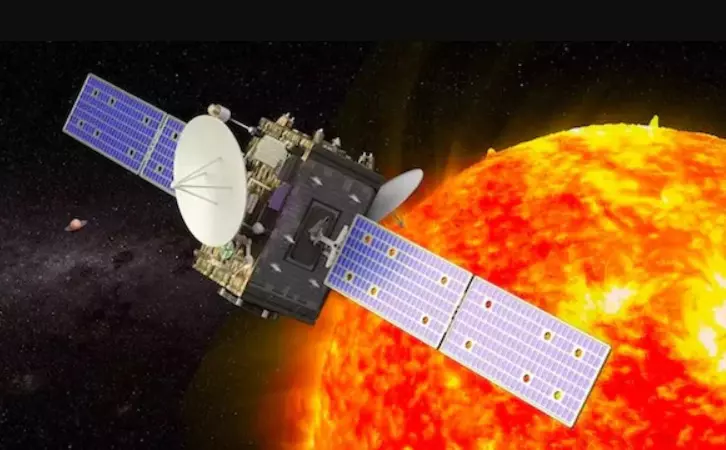TRENDING TAGS :
India's first solar mission Aditya L-1 will not be able to see total solar eclipse
The country's first space-based solar observatory Aditya L-1 is continuously studying the Sun. But it will not be able to see the complete solar eclipse today. The reason for this is that the solar eclipse is visible in large parts of North America.
Total solar eclipse is taking place today in many places around the world. When the Sun, Moon and Earth come in a straight line, a solar eclipse will occur and there will be darkness for about 4 minutes. The country's first space-based solar observatory Aditya L-1 is continuously studying the Sun. But it will not be able to see the complete solar eclipse today. The reason for this is that the solar eclipse is visible in large parts of North America. This rare astronomical phenomenon is being witnessed across America. The special thing is that many programs are being organized to see this astronomical phenomenon, from skydiving to special flights.
For almost the first time in this century, a total eclipse will be visible in the western and northern parts of New York, America. NASA says about this astronomical event, "On April 8, 2024, a total solar eclipse will pass from North America through Mexico and Canada. A total solar eclipse occurs when the Moon passes between the Sun and the Earth. During The face of the sun is completely blocked, and the sky becomes dark. It seems as if morning has turned to evening."
Apart from many other experiments, NASA also has special research plans to chase the shadow. However, the entire event of total solar eclipse will last for several hours, during which day will feel like night. There will be complete darkness in the sky for four minutes. But India's Aditya L1 satellite will not be able to witness this astronomical event. This is not because the Indian Space Research Organization (ISRO) has made any mistake, but because the satellite has been placed at such a place that it can see the Sun uninterrupted 24x7, 365 days. Indian scientists chose such a place to ensure that the satellite's view is never interrupted due to the eclipse.
ISRO Chairman S Somnath said, "Aditya L1 spacecraft will not be able to see the solar eclipse, because the Moon is behind the spacecraft at Lagrange Point 1 (L1 point), the eclipse visible on Earth does not have much significance at that location." The Aditya L1 spacecraft is placed in a halo orbit around the Lagrange point 1 (L1) of the Sun-Earth system, which is about 1.5 million km from Earth. The Sun can be seen continuously without any interruption or even during eclipse from the satellite placed in coronal orbit around the Aditya L1 point.



